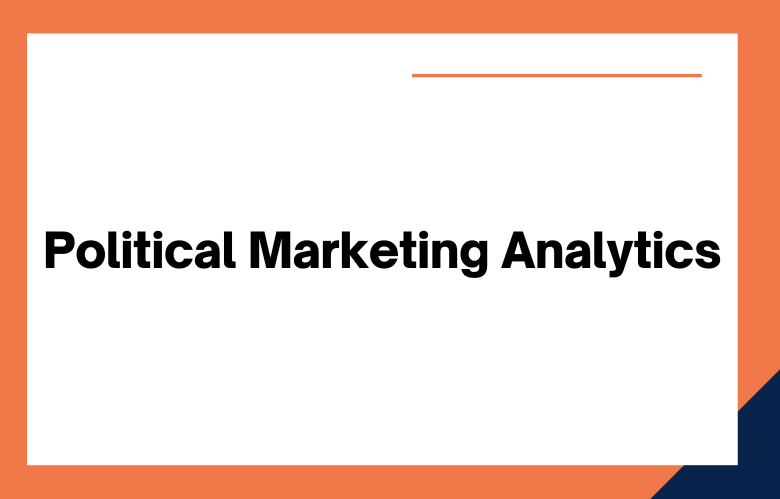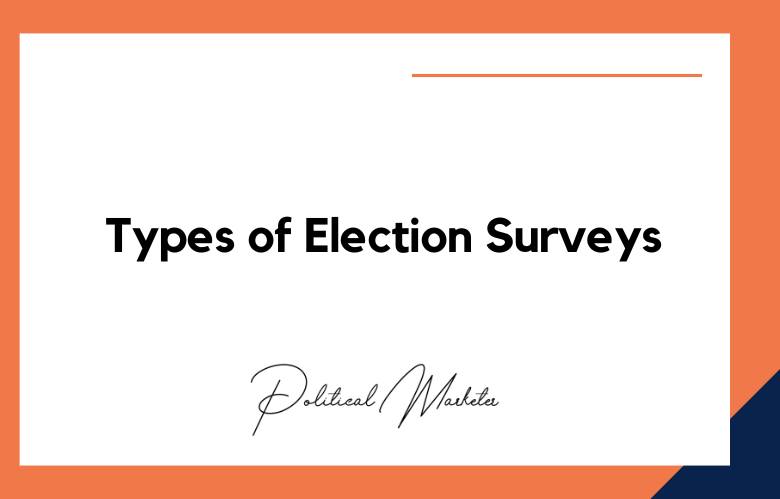In the world of politics, campaigns are always looking for an edge. They want to know what message will resonate with voters and how best to reach them. That’s where political marketing analytics comes in. Political marketing analytics uses data to assess voter behavior and preferences.
By understanding what voters want and tailoring their message accordingly, campaigns can increase their chances of success.
What is Political Marketing Analytics?
In short, political marketing analytics uses data to inform and improve political campaign strategy. This can include everything from voter turnout analysis to polling data interpretation to message testing.
By taking a data-driven approach, campaigns can make more decisions about where to allocate resources and how best to appeal to voters.
In short, political marketing analytics uses data to inform decisions about campaign strategy. This data can come from various sources, including social media, website traffic, and voter polls. Once this data is collected, it can be analyzed to reveal insights about voter behavior, preferences, and trends.
These insights can then be used to guide campaign strategy. For example, suppose website traffic data shows that a particular demographic is not engaging with your website. In that case, consider targeting them with a different message or advertisement.
Similarly, if voter polls indicate that a particular issue is important to voters in your district, you may want to adjust your platform accordingly. The bottom line is that by using data to make informed decisions, political campaigns can be more strategic in their approach and better equipped to win elections.
Why Does Political Marketing Analytics Matter?
Any advantage a campaign can gain can be crucial in an era of hyper-partisan politics and ever-increasing campaign costs. Marketing analytics provides campaigns with a way to track progress, identify potential problems early on, and effectively target voters.
In other words, it helps campaigns save time and money while increasing their chances of success at the polls.
In a world where people are inundated with nearly 5,000 marketing messages daily, it’s more important than ever for political campaigns to cut through the noise and reach voters where they are—which is increasingly online.
But how can campaigns effectively target voters online? The answer is data. More specifically, campaign managers must utilize political marketing analytics to decide where to allocate resources, what messages to put forth, and which voters to target.
In short, political marketing analytics collects and analyzes voter data to understand the electorate better. This data can be used for various purposes, such as developing targeted marketing campaigns, increasing volunteer engagement, optimizing fundraising efforts, and more.
How Political Marketing Analytics Works
Several different methods can be used to collect data for political marketing analytics. Campaigns can survey voters directly, collect publicly available data, or use social media data. Once the information is collected, it can be analyzed to assess voter preferences on various issues.
Identifying swing voters is one of the most essential uses of political marketing analytics. Swing voters are not solidly committed to either party and could be persuaded to vote for either candidate. Knowing who these voters are and what issues matter to them is crucial for campaign success.
Another vital use of political marketing analytics is identifying trends in voter behavior. For example, analysts might look at data to see how voting patterns have changed or how different groups tend to vote. This information can be used to predict how people will vote in the future and tailor campaigns accordingly.
In today’s competitive political landscape, data-driven decision-making is essential for success. By understanding who voters are and what issues they care about, campaigns can tailor their messaging to resonate with voters and win elections.
In addition, political marketing analytics can help campaigns identify potential donors, track the success of fundraising efforts, and much more.
The Benefits of Political Marketing Analytics
Political marketing analytics offers several benefits for campaigns, including:
- A deeper understanding of voter behavior.
- The ability to target swing voters and undecided voters.
- Improved communication with voters.
- Reduced campaign costs.
- The ability to track and measure the effectiveness of campaign activities.
- The ability to make quick, informed decisions about where to allocate resources.
- It can help you better understand your target audience
- It can help you identify key voter segments
- It can help you track campaign progress and performance
- It can help you optimize your campaign resources
- It can provide insights into how people are reacting to your campaign messaging.
- It can help you understand the impact of third-party endorsements
- It can help you know your audience and their needs
- It can help you target specific voters and constituencies
- It can track the progress of your campaign and identify areas that need improvement
- It can help you measure the effectiveness of your advertising and outreach efforts
- It can provide insights into how people are reacting to your campaign
- It can help you understand your target audience
- It can help you develop effective marketing strategies
- It can track the progress of your campaigns
- It can help you identify critical demographics
- It can measure the success of your campaigns
- It can provide insights into how people interact with your campaign content.
- It can help you optimize your marketing efforts.
- It can help you better understand your target audience
- It can help you identify which platforms are most effective for reaching your target audience
- It can help you track how well your campaign is doing in real-time
- It can help you optimize your campaign for better results
- It can help you understand the public’s perception of your candidate or issue
- Understanding how to use marketing analytics can help your business reach more people
- Political marketing analytics can help you know your target audience
- It can also help you track the progress of your campaign and see where improvements need to be made
- Analytics can provide valuable insights into what is and isn’t working with your marketing strategy
- It can show you how to allocate your resources to get the best results
- Gain insights into who your target audience is
- Understand what issues are essential to your target audience
- Identify which demographics support your campaign
- Track voter sentiment on social media
- Analyze how well your campaign is performing
- It can help you target your campaign to specific demographics
- It can help you understand how people are reacting to your campaign
- It can help you track spending and results in real-time
- It can help you optimize your campaign for better results
- It can provide a detailed analysis of how well your campaign is doing
How does Political Marketing Analytics Work?
Most political campaigns hire consultants or firms specializing in collecting and analyzing data. These consultants use various methods to collect data, including surveys, focus groups, interviews, and observation.
Once the data is collected, it is analyzed to identify trends and patterns in voter behavior. This information is then used to develop marketing strategies tailored to specific voter groups.
Let’s take a look at each step:
Collecting Data:
The first step is collecting data from various sources. This could include voter rolls, fundraising records, polling data, social media data, website traffic data, and more. Essentially, any source of information that can provide insights into voters’ preferences and habits can be used for political marketing analytics.
Cleaning and Organizing Data:
Once you’ve collected your data, the next step is cleaning it and organizing it to make it easy to analyze. It includes identifying missing values, dealing with outliers, and creating consistent variable names across different datasets.
Analyzing Data:
The third step is analyzing the data to identify patterns and trends. This could involve building predictive models, conducting A/B tests, or performing cluster analysis.
Using Insights to Inform Strategy:
The final step is using those insights to inform campaign strategy. This might involve targeting sure voters with specific messages or increasing spending on certain channels based on what works well.
Conclusion
Political marketing analytics is a powerful tool to help campaigns better understand voter behavior and preferences.
By using data to assess voter behavior, campaigns can increase their chances of success by targeting swing voters and identifying trends in voter behavior.
In an increasingly competitive political landscape, any advantage can make a difference.
The use of marketing analytics is becoming increasingly important in the political world.
By understanding and applying the concepts we’ve covered in this blog post, your campaign can make more knowledgeable decisions about where to allocate resources, how to target voters, and what messages will resonate with different population segments.
If you want to learn more about how marketing analytics can help your campaign or would like to discuss your specific needs, contact us today for a free consultation. We look forward to helping you win on election day!
Call: +91 9848321284
Email: [email protected]










